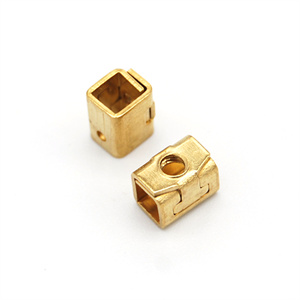Heat Treatment Of Precision Metal Stamping
The heat treatment in Precision Metal Stamping is a critical process step aimed at improving the internal structure and properties of metal materials through heating, insulation, and cooling to meet specific usage requirements. In precision metal stamping, heat treatment usually includes the following main stages:
Heating: Heat Precision Metal Stamping to a predetermined temperature to change its internal structure and performance. The choice of heating temperature depends on the type, composition, and required performance of the material.
Insulation: After reaching the predetermined temperature, maintain Precision Metal Stamping for a certain period of time to ensure uniform heat distribution and allow for corresponding changes in the microstructure inside the material.
Cooling: After completing the insulation, cool the Precision Metal Stamping at the predetermined rate. The cooling methods can be natural cooling, water quenching, oil quenching, etc., depending on the type, thickness, and required performance of the material.
The main purpose of heat treatment in precision metal stamping is to:
Improving the mechanical properties of materials: Through heat treatment, the hardness, toughness, strength, wear resistance, and other mechanical properties of materials can be improved to meet the special requirements of Precision Metal Stamping.
Eliminating internal stress: Metal may generate internal stress during processing, which can cause deformation or cracking of parts. By heat treatment, these internal stresses can be eliminated or reduced, improving the stability and reliability of Precision Metal Stamping.
Improving the processing performance of materials: Heat treatment can change the microstructure of materials, making them easier to process and form. This helps to reduce deformation and cracking during the machining process, improving the accuracy and quality of Precision Metal Stamping.
During the heat treatment process, it is necessary to strictly control parameters such as heating temperature, insulation time, and cooling rate to ensure the required material properties are obtained. In addition, it is also necessary to pay attention to safety issues during the heat treatment process, such as preventing accidents such as fires and explosions.
